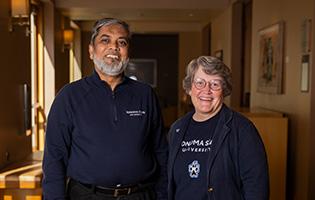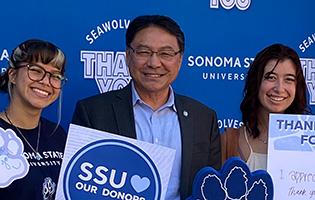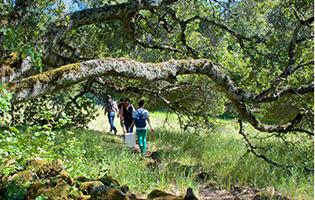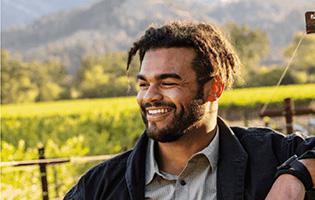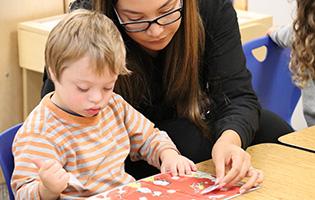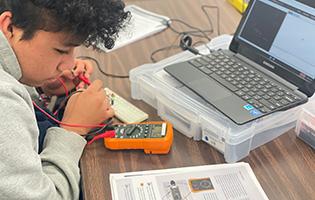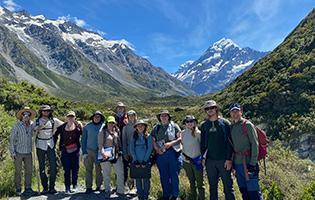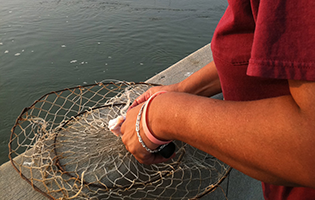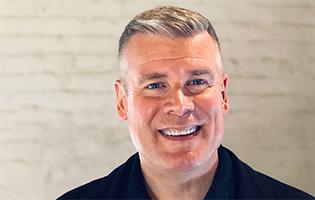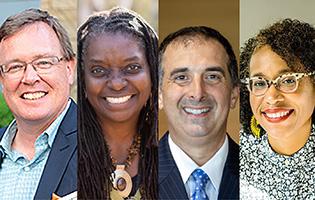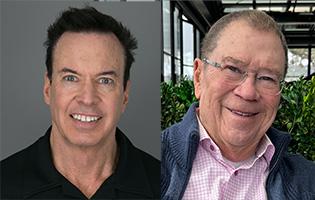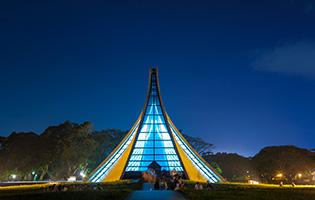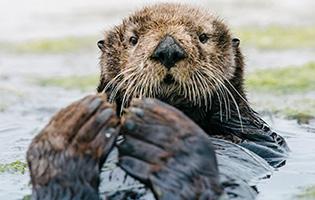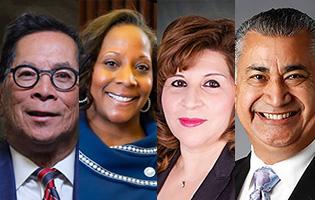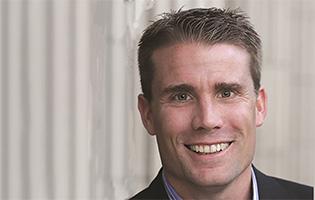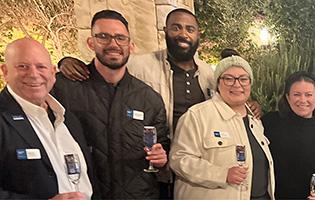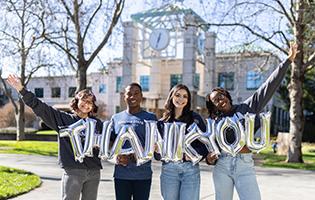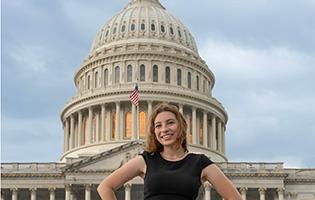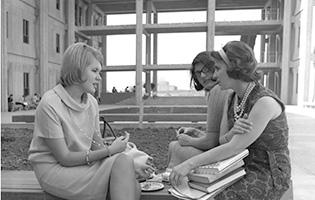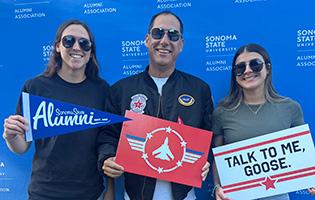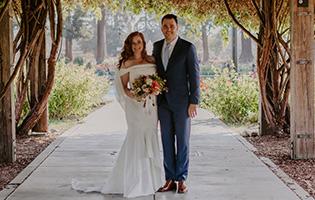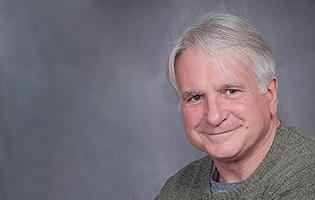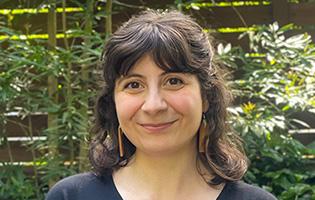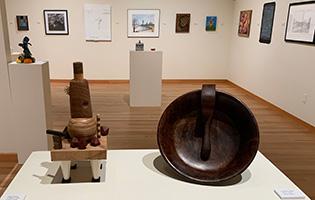Learning by Making
How a quest to transform science education pushed the technology equity curve
Before cloud storage and critical updates that support browser connectivity to USB ports, SSU faculty, staff, and volunteers at EdEon STEM Learning built their own technology to innovate science teaching and took it to high school classes in rural and underserved schools. Aptly named Learning by Making, the curriculum model has evolved and expanded for a decade, benefiting thousands of students at Ukiah, Point Arena, Round Valley, Roseland University Prep, and Southern Trinity high schools and recent new partners in Southern California, including Big Bear High School.
“Learning by Making has been our group’s most challenging project, but it also has the potential to transform STEM education nationally.” – Dr. Lynn Cominsky Director and founder, SSU EdEon STEM Learning
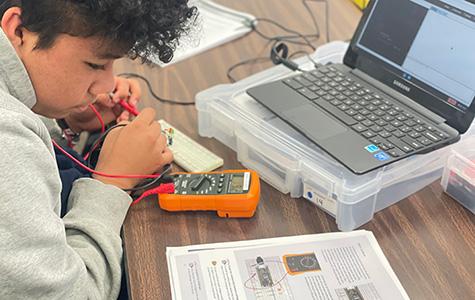
to measure voltage on his BasicBoard.
Inspiration breeds invention
“We set out to create lessons to meet the science and engineering performance expectations set by Next Generation Science Standards” said Dr. Lynn Cominsky, who has been leading the curriculum development from the outset. “The problem was there was no affordable technology made for the classroom that could support our experiments.”
So, for the first five years, the EdEon team built the tech themselves – using custom chips and hand soldering. Cominsky’s late husband, Garrett Jernigan, invented an interactive cloud system tied to each classroom that was modeled after the system used when he built a small satellite with SSU undergraduates. They adapted the hardware platform to create the tools needed to teach technical elements of science practices, including coding, electronics, and sensors.
Taking it to the schools
Originally funded in 2013 by a $3 million grant from the U.S. Department of Education, Learning by Making was specifically designed to benefit rural schools, which Cominsky said are often underserved in STEM education. The integrated curriculum works well in schools with fewer science teachers, and the self-directed model serves a wide range of learners.
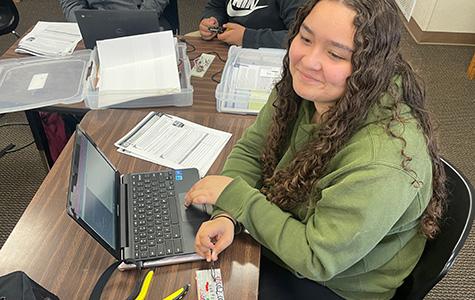
on her BasicBoard to determine which part of the
sensor is detecting light.
Ukiah teacher Greg Martin said the LbyM curriculum better engages all students, especially those not served by traditional practices. “One of my students had little interest in any of his classes. But he excelled in LbyM lessons and took it even further on his own by researching and building his own computer-controlled car.”
Claudia Harbour, who teaches at Trinity High School, said one student with reading comprehension difficulty needed help understanding the written directions to start LbyM lessons. “But once he engaged with the pictures and tech, he accelerated and became my right hand. It was the first time students were asking for his help,” she said.
Expansion into Southern California with large rural communities was made possible by a second, $4-million Department of Education grant and by commercially available technology to replace LbyM’s custom builds, said Dr. Laura Peticolas, SSU EdEon’s Associate Director and a principal curriculum developer.
“When Google came out with a way to use browsers to communicate with hardware connected to computers’ USB ports, we became able to support the curriculum at one-tenth the cost of the previously used custom laptops. That’s critical in underserved areas that don’t have tech in their classrooms,” she said.
Turtle by Turtle
LbyM lessons are 80 percent hands-on, teacher-supervised lab activities using a customized web app and the Logo programming language developed by MIT researchers, including project volunteer Brian Silverman. Students learn to code in Turtle Logo within the LbyM Web App, then use it to connect to student-built electronic boards, ultimately to build experiments and analyze data from different sensors. In one lesson, they learn about a turtle’s life cycle and then, using those tools, they simulate the turtle’s movements based on real data obtained from GPS sensors. Subsequent hardware-based experiments use the Logo language to answer student-posed questions about energy and matter using soil moisture, temperature, and light sensors.
“LbyM is an exciting class to teach because there is something for everyone. Students practice logic and analytical thinking but can also be creative and expressive.” – Derek Hoak Ukiah teacher
STEMACES: The New Frontier
With an infusion of $7.9 million from the Department of Education in 2023 – awarded based on successful leadership and data collected over 10 years – a new project has launched with the potential to reach thousands more rural and underrepresented students. STEMACES (Science, Technology, Engineering, Math and Computing Education Support) will apply elements of the high school LbyM curriculum for eighth-grade classes to six pilot schools in 2024-25 with the goal of bringing it into 20 schools each in California and Texas in subsequent years.
“We could provide long-term success data only because we had been integrating tech into the learning process before such tech existed, and could prove its effectiveness,” said Peticolas, who is Principal Investigator for the STEMACES grant.
Summarizing the team’s work, Peticolas said, “Our true goal is to teach foundational knowledge to a much larger group of learners in hopes that they will – when making decisions that would benefit from being scientifically literate – make informed decisions for their lives, their families, and their futures.”
—Janet Durkin



